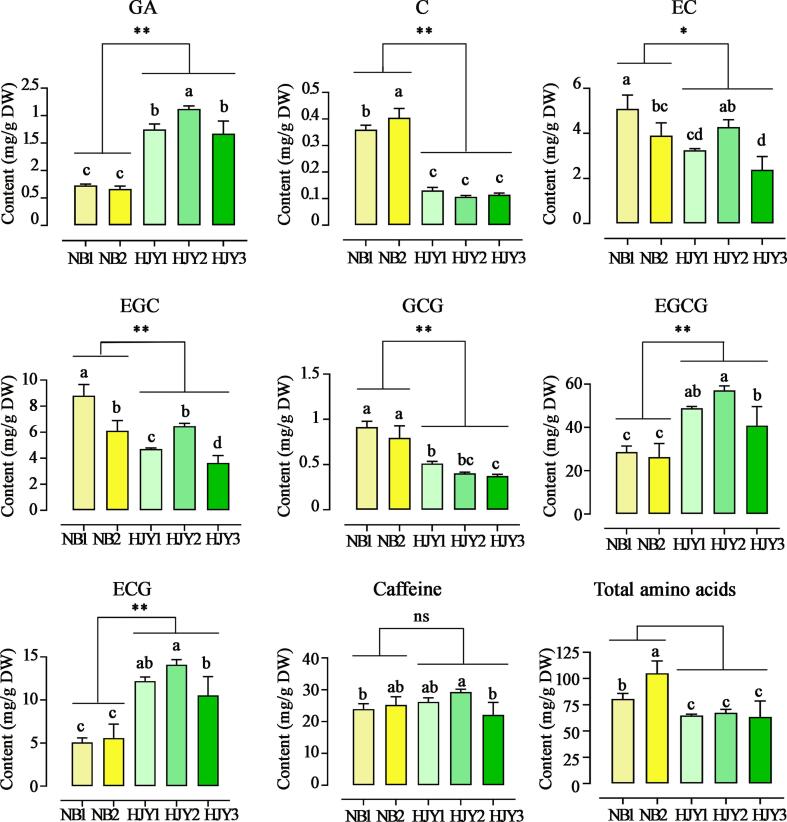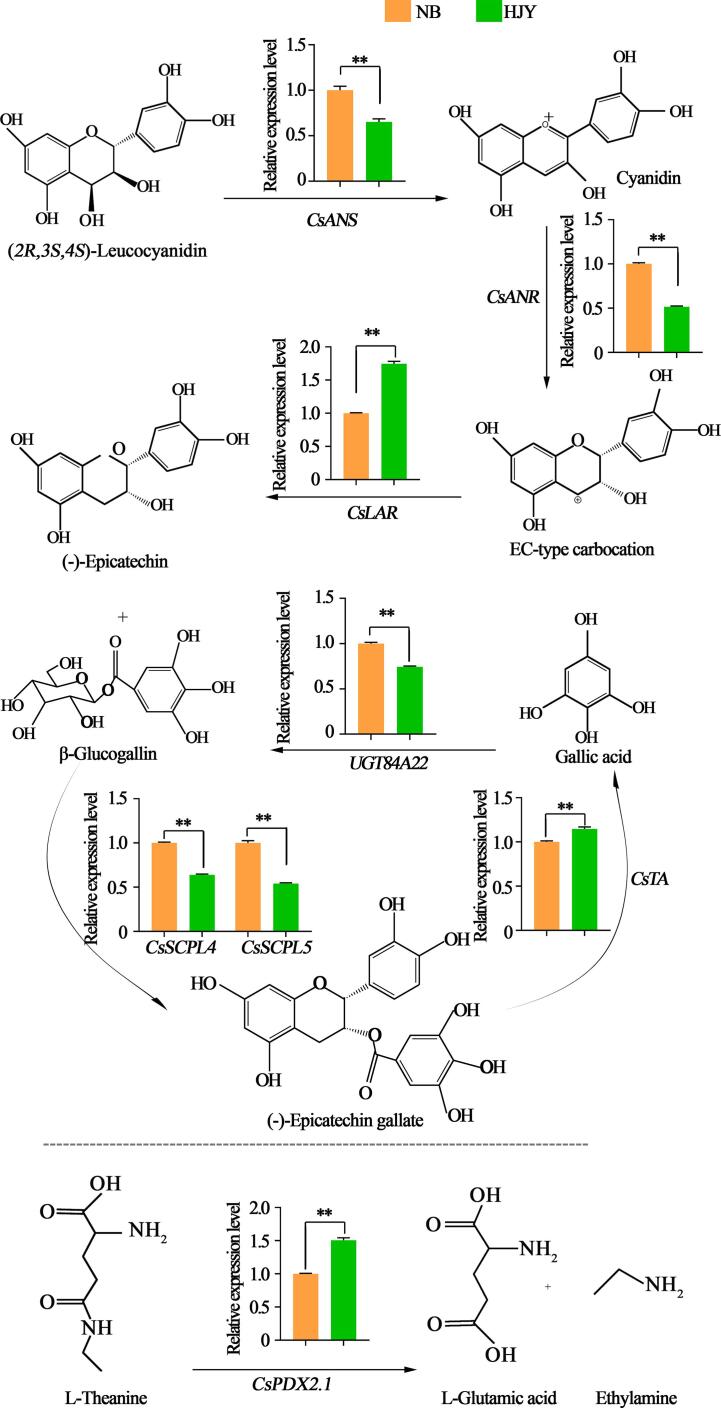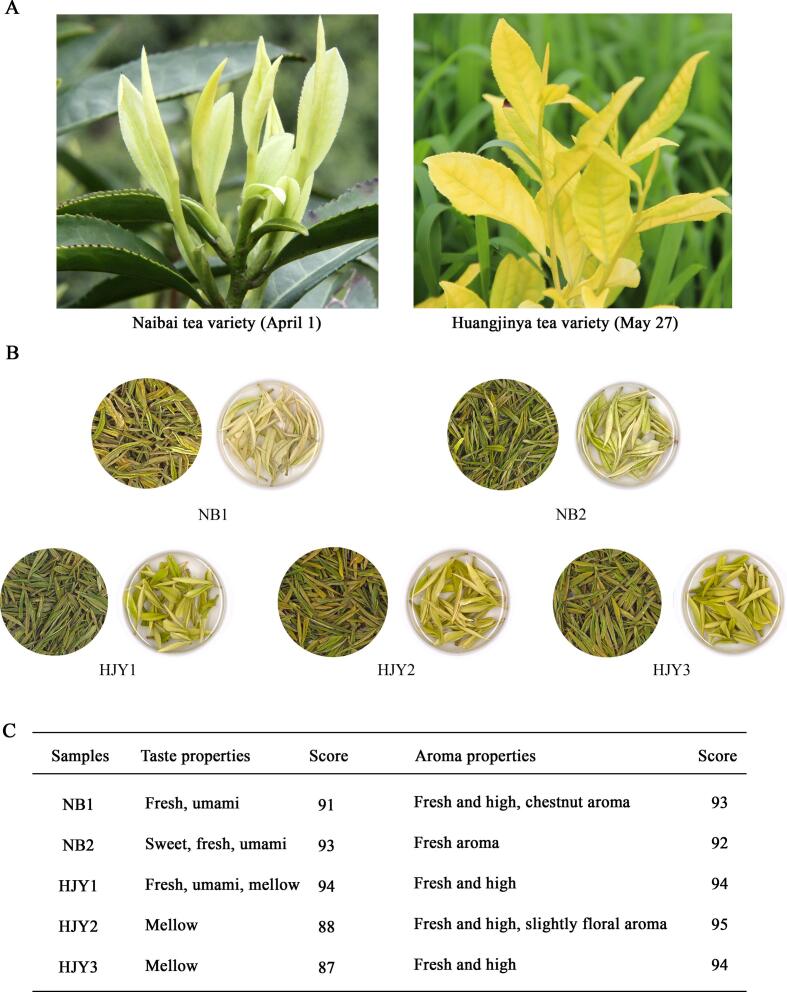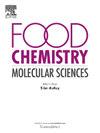Green tea processed from albino tea varieties often has umami taste and fresh aroma. This study identified green teas made from two types of albino tea cultivar, one having the white shoots (called Naibai, NB) and the other having the yellow shoots (called Huangjinya, HJY). Taste compounds analyses showed that galloylated catechins were highly concentrated in HJY green teas, whereas non-galloylated catechins and amino acids were more abundant in NB green teas. CsTA (involved in the catabolism of galloylated catechins) showed high expression in HJY tea shoots, resulting in gallic acid as a precursor for β-glucogallin biosynthesis being abundant in HJY. CsPDX2.1 (responsible for theanine hydrolyzation) had a lower expression level in NB than HJY shoots. Fatty acid–derived volatiles (FADVs), glycosidically bound volatiles (GBVs) and carotenoid–derived volatiles (CDVs) were highly concentrated in HJY green teas, whereas amino acids–derived volatiles were highly concentrated in NB green teas.



| 公司名称 | 产品信息 | 采购帮参考价格 | |
|---|---|---|---|
| 阿拉丁 | aroma standards including benzyl alcohol |
99.5%
|
¥19.00~¥68719.90 |
| 阿拉丁 | aroma standards including linalool |
98%
|
¥24.00~¥10600.00 |
| 阿拉丁 | aroma standards including (Z) –3–hexenyl hexanoate |
98%
|
¥42.00~¥6039.00 |
| 阿拉丁 | aroma standard ocimene |
90%
|
¥858.90~¥858.90 |
| 阿拉丁 | aroma standards including ?2–ionone |
97%
|
|
| 阿拉丁 | aroma standards including cedrol |
98%
|
|
| 阿拉丁 | aroma standards including methyl jasmonate |
98%
|
|
| 阿拉丁 | aroma standards including nonanal |
96%
|
|
| 阿拉丁 | aroma standards including terpineol |
95%
|
|
| 阿拉丁 | aroma standards including geraniol |
99%
|
|
| 阿拉丁 | aroma standards including phenylacetaldehyde |
95%
|
|
| 阿拉丁 | aroma standards including ethyl decanoate |
99%
|
|
| 阿拉丁 | aroma standards including benzaldehyde |
99.5%
|
|
| 阿拉丁 | aroma standards including octanal |
99%
|


